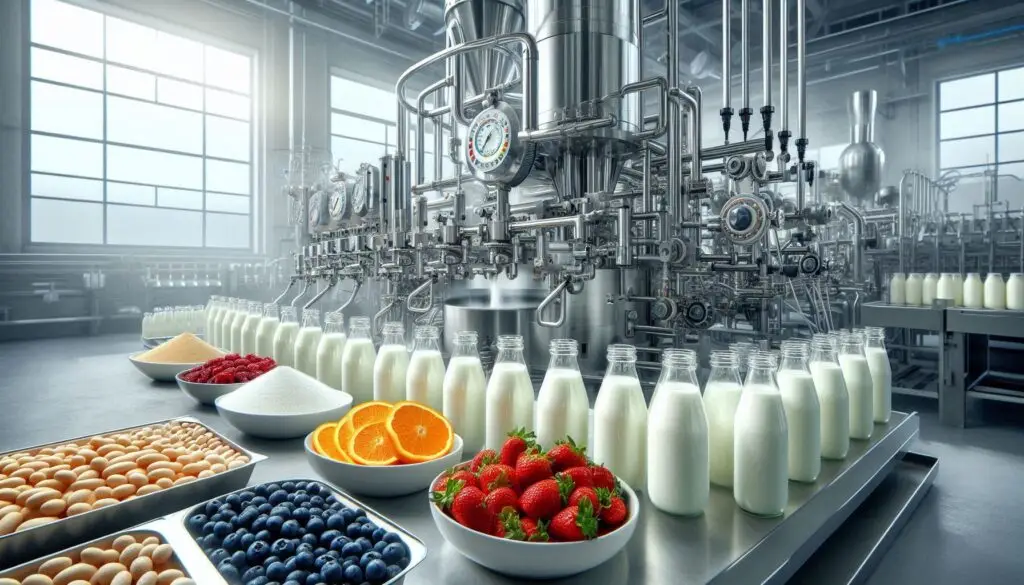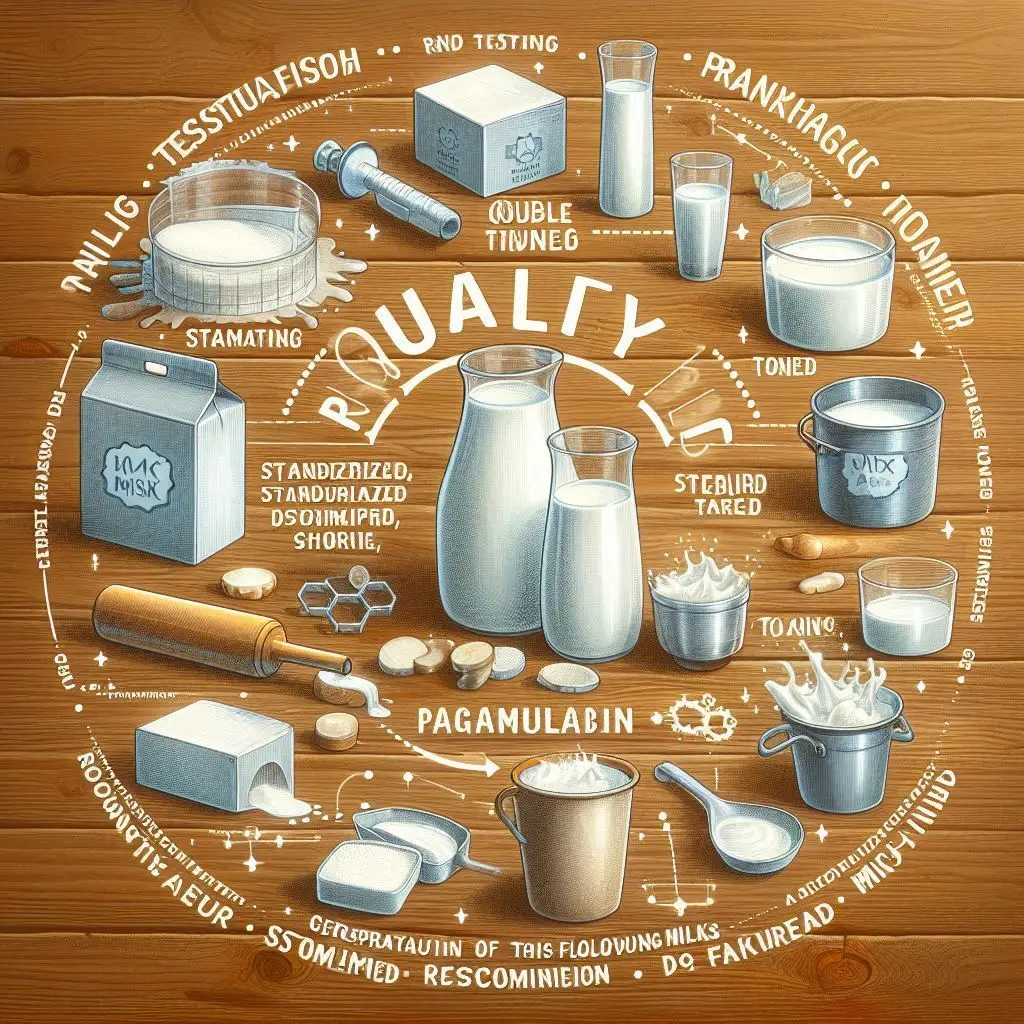Manufacturing of Sterilized, Homogenized, and Flavored Milk

Introduction
Milk is a staple food that requires strict processing to ensure safety, quality, and extended shelf life. The manufacturing of sterilized, homogenized, and flavored milk involves multiple steps, from raw milk reception to packaging. These processes enhance texture, prevent microbial contamination, and allow for the addition of flavors.
With rising consumer demand for safer and longer-lasting dairy products, advanced dairy processing techniques like ultra-high temperature (UHT) sterilization and homogenization play a crucial role (Dairy Processing Guide).
Reception and Testing of Raw Milk
Quality Control at the Dairy
Raw milk arrives at processing plants from dairy farms. It undergoes rigorous testing to ensure compliance with safety and nutritional standards. Quality checks involve:
- Composition analysis: Verifying fat, protein, and lactose content.
- Temperature assessment: Raw milk should be received at or below 4°C.
- Microbial testing: Checking for bacteria, antibiotics, and contaminants (Food Safety Standards).
Milk that meets the required standards proceeds to the next stage, while substandard batches are discarded or sent for reprocessing.
Filtration and Clarification
Removing Impurities
Before further processing, milk passes through filtration and clarification systems. These remove dirt, sediment, and other impurities. This step ensures cleaner milk with better texture and appearance.
Clarification Process
Clarification separates unwanted particles using centrifugal force, eliminating suspended solids and improving milk stability (Dairy Technology Guide).
Homogenization
Why Homogenization Matters
Milk naturally contains fat globules that can separate, leading to an uneven texture. Homogenization ensures uniformity by breaking down fat molecules into smaller particles.
How It Works
- High-pressure pumps push milk through tiny nozzles.
- Fat globules break down into smaller, evenly dispersed particles.
- This prevents cream separation and results in a smoother consistency.
Homogenization is crucial for enhanced texture and longer shelf life (Dairy Processing Insights).
Sterilization
Ensuring Microbial Safety
Milk sterilization involves heat treatment to eliminate bacteria and other microorganisms. The most common method is ultra-high temperature (UHT) processing, where milk is heated to 135-150°C for a few seconds.
Benefits of UHT Treatment
- Kills pathogens while preserving nutrients.
- Extends shelf life up to six months.
- Does not require refrigeration until opened.
Sterilization ensures the safety and longevity of milk, making it ideal for storage and transport (UHT Milk Benefits).
Flavor Addition (Optional)
Creating Flavored Milk Varieties
To cater to consumer preferences, manufacturers add natural and artificial flavors to milk. Popular options include:
- Chocolate (cocoa and sugar syrup)
- Vanilla (vanilla extract)
- Strawberry (fruit extracts or synthetic flavors)
Enhancing Taste and Market Appeal
Flavored milk offers a nutritious alternative to soft drinks and attracts younger consumers. It provides essential nutrients while appealing to taste preferences (Flavored Milk Trends).
Packaging
Hygienic Packaging Methods
After sterilization and homogenization, milk is filled into sterilized containers. Common packaging options include:
- Aseptic cartons (Tetra Pak technology)
- Glass bottles
- Plastic containers
Importance of Sterile Packaging
Sterile packaging prevents contamination and extends product shelf life. Advanced aseptic technology keeps milk fresh for months without refrigeration (Packaging Innovations).
Cooling and Storage
Maintaining Freshness
Packaged milk is rapidly cooled to room temperature before storage. Proper refrigeration maintains its quality and prevents spoilage.
Storage Conditions
- UHT milk: Can be stored at room temperature until opened.
- Flavored and pasteurized milk: Requires refrigeration below 4°C.
Proper storage conditions ensure long-lasting freshness and consumer safety (Cold Chain Management).
Conclusion
The manufacturing of sterilized, homogenized, and flavored milk involves multiple steps to ensure safety, quality, and market appeal. Filtration, homogenization, and sterilization play crucial roles in enhancing milk’s texture and longevity. Additionally, flavoring and proper packaging contribute to increased consumer preference. With advanced dairy technology, milk products are now safer and more convenient than ever before.
By following strict hygiene and quality standards, dairy manufacturers meet consumer demand for nutritious and long-lasting milk products. Understanding this process helps appreciate the technology behind everyday dairy consumption.
For more insights on dairy production standards and best practices, visit Dairy Industry Resources.
For more pearls of Vets Wisdom:
Bloat in Ruminants






Responses